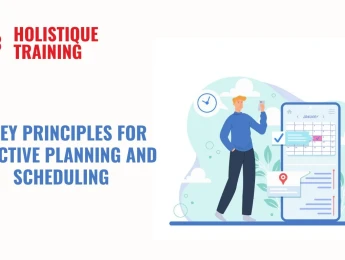- Table of Contents
- Understanding Employee Grievances
- Common Employee Grievances
- Communication Breakdowns
- Compensation and Benefits
- Workplace Harassment and Discrimination
- Inadequate Work-Life Balance
- Unclear Performance Appraisals
- Lack of Growth Opportunities
- Mismanagement of Conflict
- 10 Steps to Effectively Handle Employee Grievances
- 1- Establish Clear Policies
- 2- Promote Open Communication
- 3- Provide Training for Managers
- 4- Implement Anonymous Reporting Channels
- 5- Thorough Investigation
- 6- Offer Mediation
- 7- Timely Action
- 8- Document Everything
- 9- Tailored Solutions
- 10- Follow Up
- Cultivating a Positive Work Environment
- Challenges of Grievance Management in the Workplace
- 1. Underreporting of Grievances
- 2. Complexity of Interpersonal Conflicts
- 3. Inconsistent Implementation of Policies
- 4. Delay in Resolving Grievances
- 5. Resistance to Change
- 6. Lack of Employee Awareness
- 7. Navigating Remote Work Challenges
- Incorporating Technology for Enhanced Grievance Management
- 1. Centralised Complaint Submissions
- 2. Streamlined Communication
- 3. Automated Escalations
- 4. Transparent Tracking of Grievance Resolution
- 5. Data Analytics for Pattern Recognition
- 6. Confidentiality Through Digital Reporting
- 7. Integration with Case Management Systems
- 8. User-Friendly Interface
- Conclusion
The modern business landscape is in a constant state of evolution, and this dynamism extends to the realm of employee management and engagement. One of the essential aspects of maintaining a healthy work environment is effectively handling employee grievances. An employee grievance refers to any concern, complaint, or issue raised by an employee regarding their work conditions, treatment, or interactions within the organisation. Addressing these grievances is not just a legal or moral obligation; it's a strategic imperative that can significantly impact overall employee satisfaction, productivity, and the company's reputation.
Understanding Employee Grievances
At the heart of any discussion on employee grievances lies the notion of discontent or dissatisfaction. These emotions can arise due to a variety of reasons, ranging from interpersonal conflicts, unfair treatment, unclear job roles, inadequate compensation, to harassment and discrimination. While some issues might appear minor, they can accumulate over time, leading to a toxic work environment and reduced morale among the workforce.
Common Employee Grievances
Diving deeper into the world of employee grievances, it's crucial to recognise the range of issues that can spark dissatisfaction. Here are some common employee grievances that organisations often encounter:
Communication Breakdowns
In the fast-paced world of business, communication is the lifeblood that keeps an organisation functioning smoothly. However, when there are breakdowns in communication, the ramifications can be profound. Employees may feel disconnected, uninformed, and undervalued. This lack of clarity about organisational goals, changes, or expectations can lead to frustration and diminished morale. It's not just about the frequency of communication but also the quality and transparency that contribute to a sense of belonging and understanding.
Compensation and Benefits
Compensation is a sensitive and pivotal aspect of the employer-employee relationship. Discrepancies in pay, unexplained deductions, or a perception of unfair compensation can quickly erode the trust between employees and the organisation. It's not merely about the salary figure but also includes a comprehensive view of benefits and perks. Lack of transparency in how compensation decisions are made can leave employees feeling undervalued and unmotivated.
Workplace Harassment and Discrimination
A recent global study cited byGallup reveals that over 23% of the global workforce, representing more than one in five employed individuals, have encountered one or more instances of violence or harassment in their professional lives. A toxic work environment resulting from harassment, bullying, or discriminatory behaviour is not only detrimental to the individuals involved but also poses a significant risk to the organisation. Instances of workplace harassment can lead to increased stress, anxiety, and decreased overall well-being among employees. The negative impact on morale and productivity can be severe. A robust anti-discrimination policy, coupled with comprehensive training programs, is essential to foster a workplace culture built on respect and inclusivity.
Inadequate Work-Life Balance
As the lines between work and personal life blur, employees increasingly value a healthy work-life balance. In fact, an overwhelming majority, 94% of employees, consider work-life balance to be a significant and crucial aspect in their professional lives, according toClockify. Demanding work hours, unrealistic expectations, and limited flexibility can lead to burnout and resentment. Organisations need to recognise the importance of work-life balance not just as a perk but as a fundamental element contributing to the overall well-being of their workforce. Offering flexible work arrangements and promoting a culture that values downtime can go a long way in addressing this grievance.
Unclear Performance Appraisals
Performance appraisals are a critical component of employee development and motivation. When the evaluation process is unclear or perceived as arbitrary, employees may feel undervalued and demoralised. Establishing transparent performance metrics, providing constructive feedback, and ensuring that recognition and rewards are aligned with individual contributions can mitigate this grievance.
Lack of Growth Opportunities
Employees are more likely to be engaged and satisfied when they see a clear path for career advancement and skill development within the organisation. A lack of growth opportunities can lead to stagnation and dissatisfaction. Companies must invest in employee development programs, mentorship initiatives, and transparent career progression pathways to address this grievance effectively.
Mismanagement of Conflict
Conflict is inevitable in any workplace, but it's how organisations handle it that makes the difference. When conflicts between employees or with supervisors are mismanaged, they can escalate, causing long-term disruptions and negatively impacting the overall work environment. Providing conflict resolution training for leaders and implementing clear procedures for addressing conflicts promptly can prevent festering issues.
Understanding the nuances of these common grievances is the first step toward creating targeted and effective strategies for resolution. By addressing these concerns head-on, organisations can foster a positive workplace culture that promotes employee satisfaction, engagement, and overall organisational success.
10 Steps to Effectively Handle Employee Grievances
To mitigate these grievances and create a positive workplace environment, organisations must adopt a structured and empathetic approach to address employee concerns. Here's a comprehensive 10-step strategy:
1- Establish Clear Policies
Begin by laying a strong foundation with comprehensive policies that clearly outline the process for submitting grievances and the subsequent steps that will be taken to address them. These policies should be easily accessible to all employees, providing a roadmap for how their concerns will be handled. Transparency in this initial stage sets the tone for a fair and just resolution process.
2- Promote Open Communication
Encourage a culture of open dialogue where employees feel comfortable discussing their concerns with supervisors or HR representatives. Establishing regular communication channels, such as feedback sessions or town hall meetings, creates an environment where employees feel heard and valued. This open communication approach builds trust and can prevent minor issues from escalating.
3- Provide Training for Managers
Equip managers with conflict resolution and communication skills to ensure they are adept at handling employee grievances. Effective management requires not only technical expertise but also interpersonal skills.Training programs can empower managers to navigate sensitive conversations, address concerns empathetically, and contribute to a positive work culture.
4- Implement Anonymous Reporting Channels
Introduce anonymous reporting mechanisms to allow employees to voice concerns without fear of retaliation. This step is crucial in ensuring that employees who may be hesitant to come forward feel secure in reporting their grievances. Anonymous channels can include suggestion boxes, online platforms, or dedicated hotlines, providing a confidential space for employees to express their concerns.
5- Thorough Investigation
Whenever a grievance is raised, conduct a thorough and impartial investigation to understand the root cause of the issue. This involves gathering relevant information, interviewing involved parties, and examining any supporting documentation. An unbiased investigation is essential for arriving at a fair and informed resolution that addresses the underlying problems.
6- Offer Mediation
For interpersonal conflicts, offer mediation as a way to resolve disputes and mend relationships collaboratively. Mediation involves a neutral third party facilitating a conversation between conflicting parties to reach a mutually acceptable resolution. This approach promotes communication, understanding, and long-term harmony within the team.
7- Timely Action
Address grievances promptly to prevent them from festering and negatively impacting morale. Delays in addressing concerns can lead to frustration and a sense of neglect among employees. Timely action not only demonstrates the organisation's commitment to resolving issues but also prevents the escalation of conflicts.
8- Document Everything
Maintain accurate records of the grievance process, including meetings, investigations, and resolutions, for transparency and legal purposes. Detailed documentation is crucial for protecting the organisation in case of legal challenges. It also serves as a valuable resource for analysing patterns and trends in employee grievances to implement preventive measures.
9- Tailored Solutions
Approach each grievance uniquely and work with the involved parties to find solutions that cater to their specific needs. Generic solutions may not effectively address the root causes of grievances. By tailoring solutions to individual circumstances, organisations demonstrate a commitment to understanding and meeting the unique needs of their employees.
10- Follow Up
After a resolution has been implemented, follow up with the concerned parties to ensure that the issue has been adequately addressed and that no further concerns have arisen. Continuous feedback loops are essential for monitoring the effectiveness of the resolution and making any necessary adjustments. Following up also reinforces the organisation's commitment to ongoing improvement and employee satisfaction.
Efficiently managing employee grievances is not just a reactive measure; it's a proactive step toward cultivating a positive work environment. When organisations invest time and resources in a robust grievance management process, they contribute to a culture of trust, collaboration, and mutual respect.
By incorporating these steps into their organisational framework, businesses can not only address individual grievances but also build a resilient and adaptive workplace culture. This approach not only enhances employee satisfaction but also contributes to improved productivity, reduced turnover, and a solid reputation that resonates within and outside the organisation.
Cultivating a Positive Work Environment
Efficiently managing employee grievances is not just a reactive measure; it's a proactive step toward cultivating a positive work environment. When employees feel heard, respected, and supported, their job satisfaction improves, leading to increased engagement, productivity, and overall organisational success. Organisations that prioritise effective grievance management also tend to attract and retain top talent, as word spreads about the respectful and supportive culture they've cultivated.
Challenges of Grievance Management in the Workplace
While effective grievance management is pivotal for maintaining a positive work environment, organisations often encounter several challenges in navigating the complexities of employee concerns. Understanding these challenges is essential for implementing robust solutions and fostering a culture of continuous improvement. Here are some common hurdles in grievance management:
1. Underreporting of Grievances
One prevalent challenge is the underreporting of grievances. Employees may hesitate to bring forth their concerns due to fear of retaliation, a lack of confidence in the resolution process, or concerns about confidentiality. Addressing this challenge requires the establishment of trust through transparent communication and the assurance of anonymity in reporting mechanisms.
2. Complexity of Interpersonal Conflicts
Resolving interpersonal conflicts can be particularly challenging, as emotions often run high, and the dynamics between individuals may be intricate. Managers and HR professionals must possess adept conflict resolution skills and be trained to navigate these complexities to reach resolutions that are fair and satisfactory to all parties involved.
3. Inconsistent Implementation of Policies
Even with well-defined grievance policies in place, inconsistent implementation can pose a significant challenge. Variations in how different cases are handled may lead to perceptions of bias or favouritism, eroding trust in the grievance resolution process. Ensuring consistent and fair application of policies requires ongoing training for managers and HR personnel.
4. Delay in Resolving Grievances
A delayed resolution can exacerbate employee dissatisfaction and escalate the impact of the grievance. Whether due to procedural bottlenecks, inadequate resources, or a lack of urgency, delays in addressing concerns can contribute to a negative work environment. Implementing streamlined processes and prompt actions is crucial to preventing grievances from festering.
5. Resistance to Change
Implementing improvements based on grievance resolutions may face resistance, especially if it involves changes to established policies or procedures. Overcoming this challenge requires effective communication to convey the rationale behind changes, emphasising the organisation's commitment to continuous improvement and the well-being of its employees.
6. Lack of Employee Awareness
Some employees may not be fully aware of the available grievance mechanisms or how to utilise them. This lack of awareness can hinder the early reporting of concerns, allowing issues to escalate. Organisations need to proactively communicate and educate employees about grievance procedures, ensuring that all individuals are well-informed and feel empowered to voice their concerns.
7. Navigating Remote Work Challenges
The rise of remote work introduces additional challenges to grievance management. Communication breakdowns, feelings of isolation, and difficulties in gauging employee well-being become more pronounced in a virtual work environment. Adapting grievance management strategies to the remote work landscape requires innovative solutions, including virtual communication channels and remote-friendly reporting mechanisms.
Addressing these challenges necessitates a proactive and holistic approach. Continuous training, transparent communication, and a commitment to adapt grievance management processes to the evolving nature of work are essential elements in creating an environment where employees feel heard, respected, and supported. Organisations that successfully navigate these challenges contribute to a workplace culture that prioritises employee well-being and satisfaction.
Table 1: Metrics for Measuring Grievance Management Effectiveness
Metric | Description | Importance |
Timely Resolution Rate | Swift addressing of grievances issues. | Minimises impact and prevents escalation. |
Employee Satisfaction Index | Gauge contentment with resolution outcomes. | Reflects effectiveness in resolving concerns positively. |
Repeat Grievance Incidence | Track recurrence of similar grievances. | Indicates the success of preventive measures. |
Communication Effectiveness | Assess clarity and transparency in communication. | Crucial for building trust and confidence. |
Policy Consistency Adherence | Evaluate uniformity in policy implementation. | Ensures fairness and mitigates perceptions of bias. |
Incorporating Technology for Enhanced Grievance Management
In the contemporary business landscape, technology serves as a catalyst for streamlining various organisational processes, and the management of employee grievances is no exception. As organisations strive to stay ahead in the digital age, leveragingemployee management software and platforms has become instrumental in efficiently handling grievances. Let's delve into how technology can enhance the grievance management process:
1. Centralised Complaint Submissions
Employee management software provides a centralised platform for submitting grievances. This digital approach simplifies the process for employees, allowing them to submit their concerns through a user-friendly interface. Centralisation ensures that all complaints are systematically recorded, preventing any from falling through the cracks.
2. Streamlined Communication
Digital platforms facilitate seamless communication between employees, HR departments, and management. Integrated messaging systems or chat features enable real-time updates and exchanges, fostering transparency throughout the grievance resolution process. This level of connectivity ensures that all stakeholders are on the same page and can respond promptly to evolving situations.
3. Automated Escalations
Automation features within employee management software can automate the escalation process based on predefined criteria. This ensures that critical grievances are swiftly brought to the attention of higher management or specialised teams. Automated escalations minimise delays and help prioritise issues that require immediate attention, contributing to a more efficient resolution process.
4. Transparent Tracking of Grievance Resolution
One of the significant advantages of technology is the ability to provide transparent tracking of the grievance resolution process. Digital platforms allow employees to monitor the status of their complaints in real time. This transparency not only keeps employees informed but also instil confidence in the effectiveness of the organisation's grievance resolution mechanisms.
5. Data Analytics for Pattern Recognition
Employee management software often comes equipped with analytics tools that enable organisations to identify patterns and trends in employee grievances. By analysing data over time, HR professionals can gain insights into recurring issues, allowing them to implement preventive measures. This proactive approach helps address systemic problems and contributes to a more harmonious work environment.
6. Confidentiality Through Digital Reporting
Anonymous reporting mechanisms can be seamlessly integrated into digital platforms. This ensures that employees can submit their grievances confidentially, fostering an environment where individuals feel safe to express their concerns without fear of retaliation. Digital reporting mechanisms, such as encrypted forms or secure online portals, contribute to the overall effectiveness of the grievance management process.
7. Integration with Case Management Systems
Employee management software can integrate withcase management systems to ensure that each grievance is tracked from initiation to resolution. This integration minimises the risk of oversight or duplication of efforts, providing a comprehensive view of the entire grievance lifecycle. It also facilitates the easy retrieval of historical data for reference or compliance purposes.
8. User-Friendly Interface
Technology brings with it the advantage of a user-friendly interface. Accessible through web browsers or mobile applications, these platforms are designed to be intuitive, making it easy for employees to navigate and submit their grievances. The user-friendly nature of these interfaces contributes to higher employee engagement in the grievance management process.
In summary, incorporating technology into grievance management represents a digital revolution that aligns with the evolving needs of modern organisations. By leveraging employee management software and platforms, companies can transform their approach to handling grievances, making the process more efficient, transparent, and employee-centric.
As organisations continue to adapt to the digital age, integrating technology into grievance management is not just a luxury; it's a strategic necessity. Embracing these digital tools not only enhances the effectiveness of the grievance resolution process but also communicates to employees that the organisation is committed to staying at the forefront of innovation in employee well-being and satisfaction.
Conclusion
In a rapidly evolving business landscape, the importance of a harmonious and engaged workforce cannot be overstated. By acknowledging and addressing employee grievances in a proactive and empathetic manner, organisations can foster an environment of trust, collaboration, and mutual respect. This approach not only enhances employee satisfaction but also contributes to improved productivity, reduced turnover, and a solid reputation that resonates within and outside the organisation.
As organisations continue to adapt and grow, embracing effective grievance management is a fundamental step toward a brighter and more prosperous future. To further enhance your skills in creating a cohesive and high-performing team, consider enrolling in our comprehensive course: ‘How to Build a Cohesive Team for Excellence.’ This course delves into strategies for fostering teamwork, effective communication, and conflict resolution, all of which contribute to a workplace culture that thrives. Elevate your leadership abilities and contribute to a workplace where both employees and organisations flourish.
























